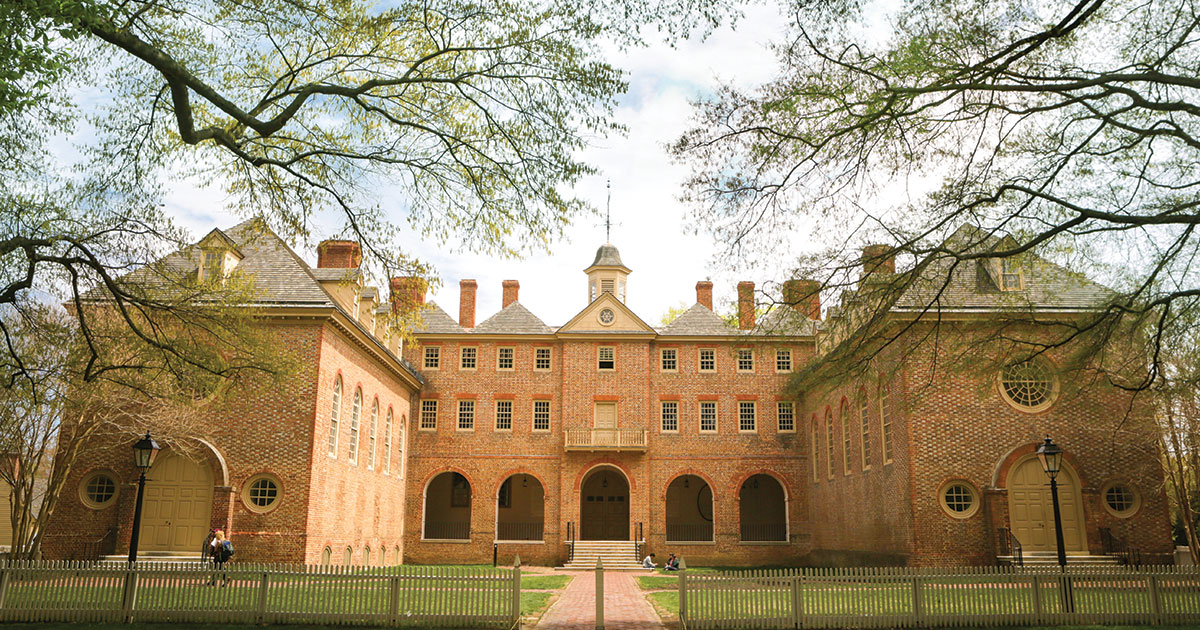50th panel discussion examines learning from the past
 Dr. James Patton opened the discussion with a word and a gift. The word was Sankofa, from the Twilanguage in Ghana, meaning "Go back and fetch it,” or in other words, know where you come from in order to move ahead. His gift symbolized the word: a wooden statue of a bird, moving forward while looking back.
Dr. James Patton opened the discussion with a word and a gift. The word was Sankofa, from the Twilanguage in Ghana, meaning "Go back and fetch it,” or in other words, know where you come from in order to move ahead. His gift symbolized the word: a wooden statue of a bird, moving forward while looking back.
Patton gave the statue to Dean Spencer Niles of the School of Education, to keep in a display case as a reminder of the event that night: “Learning from the Past to Shape the Future,” a panel of esteemed African-American alumni from William & Mary. The panel was held in preparation for the Lemon Project’s 50-Year Commemoration Symposium, which places the desegregation of William & Mary in the context of the integration process of higher education throughout Virginia.
Patton, the first African-American professor at the School of Education, was one of the four panelists at the event. Joining him was his former colleague Brenda Williams Ed.D. ’83 and two of the first three African-American students in residence at the university: Lynn Briley ’71 and Janet Brown Strafer ’71, M.Ed.’77. The third member of the “Legacy Three,” Karen Ely ’71 sat in the audience.
The four panelists answered questions about their experiences breaking racial barriers at William & Mary, focusing on why they chose to come to the university and the pivotal moments they experienced here. They also discussed their time in historically black high schools and the different challenges they faced in the transition to higher education.
Briley said that the “doors had already been knocked down, and [she was] just encouraged to walk through,” when she decided to attend William & Mary.
On the other hand, even though Strafer had the grades, her high school guidance counselor still recommended she choose a smaller, less academically-rigorous university. But when she heard that, she said her tenacious spirit took over, and she would not be stopped before receiving her letter of acceptance to William & Mary.
They still faced the normal challenges of freshman students. Strafer didn’t know she would have two roommates. It was her first time being away from home, and she cried when her family left.
Briley remembered what her family told her that day: “Don’t ruffle any feathers, because if something happens, you’ll be the first ones [white students] will come to [if something goes wrong].”
She, Strafer and Ely were the only African-Americans on campus during their freshman year except for university staff members. Briley always carried around her Norton Anthology of English Literature so she wouldn’t be mistaken for an employee.
During athletic events, William & Mary used to play the song “Dixie” during pauses in the game. Briley and a group of other black students organized a protest at one game, and when the song came on, they stood and raised their fists. The white students were a little frightened, and she never remembers hearing the song again.
“We represented our entire race,” Briley said.
As a faculty member, Patton helped found a coalition of black students and professors at the univers
ity, who met to voice their concerns. The group was instrumental in building solidarity between African-Americans at William & Mary, especially during the early years of integration.
When Williams started teaching at the university, it was a different world, and she’s seen a lot of change since then. She doesn’t think the burden for changing is on her generation anymore, though, and she has a word of advice for every student she meets.
“The change you want to see has to start with you,” Williams said.
After the event, all four panelists gathered for a picture. They stood in a line next to a table with green streamers and the William & Mary cypher. Patton reached down and picked up the statue. The bird looked backwards, its beak forming a circle around its moving body, moving in a continuous cycle of learning from the past to shape the future. Sankofa.

